Pre-analytical stability
Pre-analytical stability varies and is an important source of error. We or others have assessed stability of most biomarkers, at room temperature, in frozen samples, during transportation in cold container, and in various matrices like serum and plasmas.
Stability
Most biomarkers protected from light are stable for years at temperature ≤ -80 °C. In general, biomarkers that are stable under certain non-optimal conditions are often relatively stable under other conditions. Likewise, biomarker instability is also a feature demonstrated under a variety of conditions. But there are notable exceptions to this general rule. For example, many biomarkers are most stable in EDTA plasma, but this is not the case for 5-methyltetrahydrofolate, which degrades faster in EDTA plasma than in serum. Methionine is rather stable, but is occasionally oxidized to methionine sulfoxide in samples frozen at -25 °C. The table below summarizes stability of biomarkers.
Stability curves for platforms B – H
This page provides data on the stability during storage and freezing/thawing of most biomarkers or metabolites included in the repertoire of Bevital by April 2019.
Recommended sample processing
We recommend to follow standardized sample processing steps to minimize degradation for either serum or EDTA. For serum, collect whole blood, allow blood to clot at room temperature (ca. 15-30mins) before centrifuging at 1-2,000g for 10 minutes in a refrigerated centrifuge before transferring supernatant immediately to clean tubes for storage at -80C. For EDTA plasma collect whole blood into EDTA treated vacutainers, before centrifuging at 1-2,000g for 10 minutes in a refrigerated centrifuge to remove cells. Resulting plasma supernatant should be transferred immediately to clean tubes for storage at -80C. EDTA samples should be maintained at 2-8C while handling (e.g. bed of ice following collection until centrifuging).
Biomarker profile may reflect non-optimal sample handling or storage
The biomarker profile of a serum/plasma sample set gives some indications of how the samples have been handled or stored. Delayed separation of serum/plasma may cause changes in concentrations of metabolites explained by cellular export (homocysteine), uptake (PL) or metabolism (arginine to ornithine conversion). Improper handling or storage of serum/plasma samples may cause degradation, oxidation, metabolism including formation from precursor(s) (choline) of numerous metabolites. Changes in selected metabolites in isolated serum/plasma are indicated in the figure to the right.
High median total homocysteine (>> 15 µmol/L) in combination with adequate circulating folate or cobalamin suggest that whole blood has been left at room temperature for hours before centrifugation to isolate the serum/plasma fraction. Delayed separation also causes an arginine to ornithine conversion giving an Arg/(Arg+Orn) ratio less than 0.5. Low folate and PLP in combination with low-normal total homocysteine suggest vitamin degradation rather than low folate status. Serum/plasma samples that have been exposed to room temperature or repeated freezing-thawing cycles have high (> 20%) 4-alfa-hydroxy-5-methyltetrahydrofolate relative to (micriobiological active) folate, high methionine sulfoxide (> 20%) relative to methionine and/or low 3-hydroxykynurenine and 3-hydroxyanthranilic acid in combination with high anthranilic acid. Sample left at room temperature also have high free choline with median values in the range 15 – 100 µmol/L.
Publications on pre-analytical stability of biomarkers
| Biomarker | Stability (Change) | Comments | Publ |
|---|---|---|---|
| Acetate |  | li_2020_a_145_2692.pdf | |
| Acetylcarnitine |  | liu_2008_rcms_22_3434.pdf anton_2015_po_0121495.pdf | |
| ADMA |  | hustad_2012_cc_58_402.pdf midttun_2014_jn_144_784.pdf | |
| Acetoacetate |  | custer_1983_ajcp_80_375.pdf mcneil_2014_cca_433_278.pdf | |
| Alanine |  | kamlage_2014_60_399.pdf | |
| Amyloid A |  | Results of adequate quality available for only equine SAA. Probably stable. | hillstrom_2010_avs_52_8.pdf |
| Anthranilic acid |  | hustad_2012_cc_58_402.pdf midttun_2014_jn_144_784.pdf | |
| Arginine |  | Relatively stable in isolated serum or plasma, but decreases in (chilled) whole blood. | hustad_2012_cc_58_402.pdf midttun_2014_jn_144_784.pdf |
| Aspargine |  | Moderate decay due to conversion to aspartic acid in improperly stored serum/plasma samples, leading to an increase in the Asp/Asn ratio. | |
| Aspartic acid |  | Increase due to formation from aspargine in improperly stored serum/plasma samples, leading to an increase in the Asp/Asn ratio. | |
| Betaine |  | hustad_2012_cc_58_402.pdf midttun_2014_jn_144_784.pdf | |
| Butyrate |  | li_2020_a_145_2692.pdf | |
| Calprotectin |  | Calprotectin (Calp) is several-fold higher in serum than EDTA-plasma, possibly related to rapid release before and during centrifugation of Calp from activated neutrophils and leukocytes containing large amounts of Calp. After removal of blood cells, Calp is rather stable. EDTA-plasma is recommended for epidemiological/clinical studies. | |
| Carboxyethyllysine |  | hull_2013_jcb_53_129.pdf | |
| Carboxymethyllysine |  | hull_2013_jcb_53_129.pdf | |
| Carnitine |  | sowell_2011_jcs_49_463.pdf anton_2015_po_0121495.pdf | |
| Choline, free |  | Phosphatidylcholine is converted to free choline; the conversion is inhibited by ETDA. | hustad_2012_cc_58_402.pdf midttun_2014_jn_144_784.pdf holm_2003_cc_49.286.pdf |
| Choline, total |  | ||
| Citrate |  | malm_2018_bb_14_416.pdf |
| Biomarker | Stability (Change) | Comments | Publ |
|---|---|---|---|
| Neopterin, total |  | Neopterin plus 7,8-dihydroneopterin are measured. The latter is converted to 7,8-dihydroxanthopterin during non-optimal sample handling. | midttun_2014_jn_144_784.pdf |
| Nicotinamide |  | pfuhl_2005_jpba_36_1045.pdf szafarz_2010_jc_878_895.pdf | |
| Nicotinic acid |  | pfuhl_2005_jpba_36_1045.pdf szafarz_2010_jc_878_895.pdf | |
| Octanoylcarnitine |  | anton_2015_po_0121495.pdf | |
| Ornithine |  | Relatively stable in isolated serum or plasma, but increases in whole blood, leading to an increased Orn/Arg ratio. | kamlage_2014_60_399.pdf |
| Palmitoylcarnitine |  | anton_2015_po_0121495.pdf liu_2008_rcms_22_3434.pdf | |
| Picolinic acid |  | whiley_2019_ac_91_5207.pdf | |
| Propionate |  | li_2020_a_145_2692.pdf | |
| Propionylcarnitine |  | anton_2015_po_0121495.pdf | |
| Pyridoxal |  | Increase in pyridoxal is not observed in chilled whole blood, possibly because of cellullar uptake. | hustad_2012_cc_58_402.pdf midttun_2014_jn_144_784.pdf |
| Pyridoxal 5′-phosphate |  | Converted to pyridoxal; the conversion is inhibited by EDTA. Relatively stable in chilled whole blood. | hustad_2012_cc_58_402.pdf midttun_2014_jn_144_784.pdf |
| 4-Pyridoxic acid |  | hustad_2012_cc_58_402.pdf midttun_2014_jn_144_784.pdf | |
| Pyruvate |  | Relatively stable in serum, but shows decrease in whole blood. | kamlage_2014_60_399.pdf |
| Quinaldic acid |  | Probably stable. | |
| Quinolinic acid |  | Assumed to be stable. | whiley_2019_ac_91_5207.pdf |
| Riboflavin |  | FMN is converted to riboflavin; the conversion is inhibited by EDTA. | hustad_2012_cc_58_402.pdf midttun_2014_jn_144_784.pdf |
| Sarcosine |  | hustad_2012_cc_58_402.pdf | |
| SDMA |  | hustad_2012_cc_58_402.pdf midttun_2014_jn_144_784.pdf |


